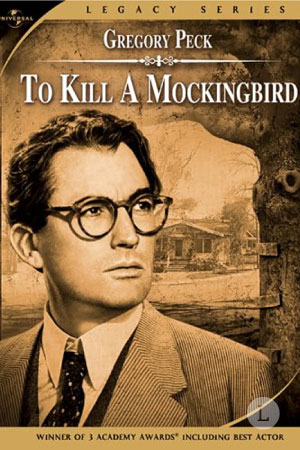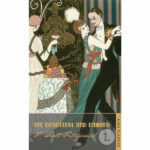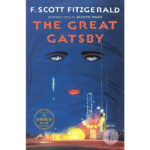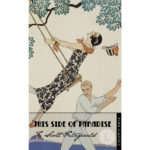Harper Lee’s Pulitzer Prize-winning novel, To Kill a Mockingbird, published in 1960, is an enduring work of American literature that explores themes of race, injustice, and moral growth through the eyes of a young girl named Scout Finch. Set in the fictional town of Maycomb, Alabama, during the Great Depression, the novel follows Scout, her brother Jem, and their father, Atticus Finch, as they navigate the complexities of life in a racially segregated society.
BOOK INFO
version: CLASSIC, EBOOK, AUDIOBOOK
number of pages: 280
literary movement: SOUTHERN GOTHIC
literary genre: SHORT STORY
1st edition: 1960
years of writing: mid 1950s - 1959
SUMMARY
At the heart of To Kill a Mockingbird is the trial of Tom Robinson, a black man falsely accused of raping a white woman. Atticus, a highly principled lawyer and single father, takes on Tom’s defense despite the social repercussions and the threat to his own safety. The trial serves as a backdrop for the novel’s exploration of racial prejudice and injustice, as well as a vehicle for the moral development of Scout and Jem.
Throughout the novel, Scout learns valuable lessons about empathy, compassion, and the importance of standing up for what is right. As she navigates the challenges of childhood and the prejudices of her community, Scout’s innocence and curiosity provide a fresh perspective on the injustices that permeate her world. Through her relationships with diverse characters such as Calpurnia, the Finch’s African American housekeeper, and Boo Radley, the reclusive and misunderstood neighbor, Scout begins to understand the complexities of human nature and the importance of seeing things from another person’s perspective.
To Kill a Mockingbird is also a powerful examination of the deep-rooted racial prejudices that plagued the American South during the early 20th century. The novel delves into the lives of both white and black characters, revealing the pervasive racism that shapes their interactions and the injustices that result from the prevailing attitudes of the time. By exposing the harsh realities of racial inequality, Lee’s novel forces readers to confront the dark side of human nature and the consequences of prejudice and discrimination.
In addition to its exploration of race and morality, To Kill a Mockingbird is a coming-of-age story that captures the essence of childhood innocence and the inevitable loss of that innocence as one grows older. Through the eyes of Scout and Jem, readers experience the joys, fears, and challenges of growing up, as well as the transformative power of empathy and understanding in shaping one’s moral character.
MAIN CHARACTERS
Scout Finch (Jean Louise Finch)
The novel’s protagonist and narrator, Scout is a young girl who experiences the events of the story from her innocent and curious perspective. Throughout the novel, Scout learns important lessons about empathy, compassion, and morality as she grows up and navigates the complexities of life in Maycomb, Alabama.
Atticus Finch
Scout’s father and a principled lawyer, Atticus is a central figure in the novel, serving as a moral compass for both his children and the community. He takes on the challenging case of defending Tom Robinson, a black man accused of rape, despite the potential social repercussions. Atticus embodies integrity, empathy, and justice.
Jem Finch (Jeremy Finch)
Scout’s older brother, Jem undergoes significant moral growth throughout the novel as he witnesses the trial of Tom Robinson and grapples with the harsh realities of racial prejudice and injustice. Jem serves as a protective figure for Scout and a companion in their various adventures.
Tom Robinson
A black man falsely accused of raping a white woman, Tom Robinson’s trial serves as the central plot point in the novel and a poignant exploration of racial injustice. His character symbolizes the vulnerability of African Americans in the racially segregated society of the 1930s.
Boo Radley (Arthur Radley)
A reclusive and mysterious neighbor, Boo Radley becomes the subject of fascination for Scout and Jem. As the novel unfolds, Scout and Jem come to understand the true nature of Boo Radley, challenging their initial assumptions and prejudices about him.
Calpurnia
The African American housekeeper for the Finch family, Calpurnia serves as a mother figure to Scout and Jem, teaching them valuable life lessons and providing a different perspective on the racial dynamics in Maycomb.
Bob Ewell
The primary antagonist of the novel, Bob Ewell is the father of the woman who accuses Tom Robinson of rape. A malicious and abusive man, Ewell embodies the worst aspects of racial prejudice and ignorance in Maycomb society.
Mayella Ewell
The woman who accuses Tom Robinson of rape, Mayella is a deeply troubled and lonely character. Trapped in a cycle of poverty and abuse, her false accusation serves as a catalyst for the novel’s exploration of racial prejudice and injustice.
Miss Maudie Atkinson
A close friend and neighbor of the Finch family, Miss Maudie serves as a supportive and wise figure in Scout and Jem’s lives. She offers insight into the events of the novel and helps guide Scout’s understanding of the world around her.
Dill Harris (Charles Baker Harris)
A friend of Scout and Jem, Dill visits Maycomb every summer and becomes a key part of their adventures. Dill’s curiosity and sense of justice contribute to the novel’s exploration of childhood innocence and moral growth.
With him, life was routine; without him, life was unbearable.
HARPER LEE
TOP 10 POINTS
- Racial Prejudice: To Kill a Mockingbird explores the deep-rooted racial prejudice in the American South during the 1930s, revealing the injustices and discrimination faced by African Americans in a racially segregated society.
- Moral Growth: The novel follows the moral development of Scout and Jem Finch, as they learn the importance of empathy, compassion, and standing up for what is right, even in the face of adversity.
- Coming-of-Age: Scout’s journey from childhood innocence to a greater understanding of the complexities of human nature serves as a compelling coming-of-age narrative that resonates with readers of all ages.
- The trial of Tom Robinson: The trial of Tom Robinson, a black man falsely accused of raping a white woman, serves as the central plot point and a poignant exploration of racial injustice and the failures of the legal system.
- Atticus Finch: Scout’s father, Atticus Finch, is a principled lawyer and single parent who embodies the values of empathy, integrity, and justice, serving as a moral compass for both his children and the community of Maycomb.
- Boo Radley: The mysterious and misunderstood neighbor, Boo Radley, is a symbol of the dangers of prejudice and the importance of looking beyond appearances to understand the true nature of a person.
- Empathy and Understanding: The novel emphasizes the power of empathy and understanding in bridging divides and fostering compassion, as demonstrated by Scout’s evolving relationships with various characters, including Calpurnia and Boo Radley.
- Small-town Life: To Kill a Mockingbird offers a vivid portrayal of life in the fictional town of Maycomb, Alabama, capturing the nuances of small-town life and the social dynamics that shape its inhabitants.
- Loss of Innocence: As Scout and Jem confront the realities of prejudice, injustice, and the complexities of human nature, they experience the inevitable loss of innocence that comes with growing up and gaining a deeper understanding of the world.
- Enduring Legacy: Harper Lee’s To Kill a Mockingbird remains a beloved and thought-provoking work of American literature, inspiring important conversations about justice, empathy, and the power of standing up for what is right, even in the face of adversity. Its timeless themes and memorable characters continue to resonate with readers nearly a century after its publication.
BOOK AWARDS
Pulitzer Prize
MOVIE ADAPTATION
The movie adaptation of Harper Lee’s Pulitzer Prize-winning novel ‘To Kill a Mockingbird’ (1960) has earned a special place in the hearts of audiences and critics alike. Directed by Robert Mulligan and released in 1962, the film features a powerful narrative, stellar performances, and unforgettable cinematic moments. Here, we delve deeper into the making and impact of this classic movie adaptation.
The movie adaptation of ‘To Kill a Mockingbird’ has left a lasting impact on generations of viewers. Its exploration of themes such as racial injustice, empathy, and moral growth continue to resonate with contemporary audiences. The film has also influenced filmmakers, inspiring them to adapt literary works with fidelity and sensitivity. Gregory Peck’s portrayal of Atticus Finch has become a symbol of moral integrity, and the character was named the greatest hero in American film by the American Film Institute in 2003.

(1960)
AT THE END
With its vivid portrayal of small-town life, its memorable characters, and its poignant exploration of themes such as racial prejudice, moral growth, and the loss of innocence, To Kill a Mockingbird remains a beloved and thought-provoking work of American literature. Harper Lee’s timeless novel continues to resonate with readers and inspire important conversations about justice, empathy, and the power of standing up for what is right, even in the face of adversity.
ABOUT WRITER

Nelle Harper Lee was an American author best known for her groundbreaking novel “To Kill a Mockingbird.” Lee’s works are characterized by their exploration of themes such as racial inequality, moral growth, and the importance of empathy. Despite publishing only a few books during her lifetime, she left an indelible mark on the literary world and remains an influential figure in American literature.



